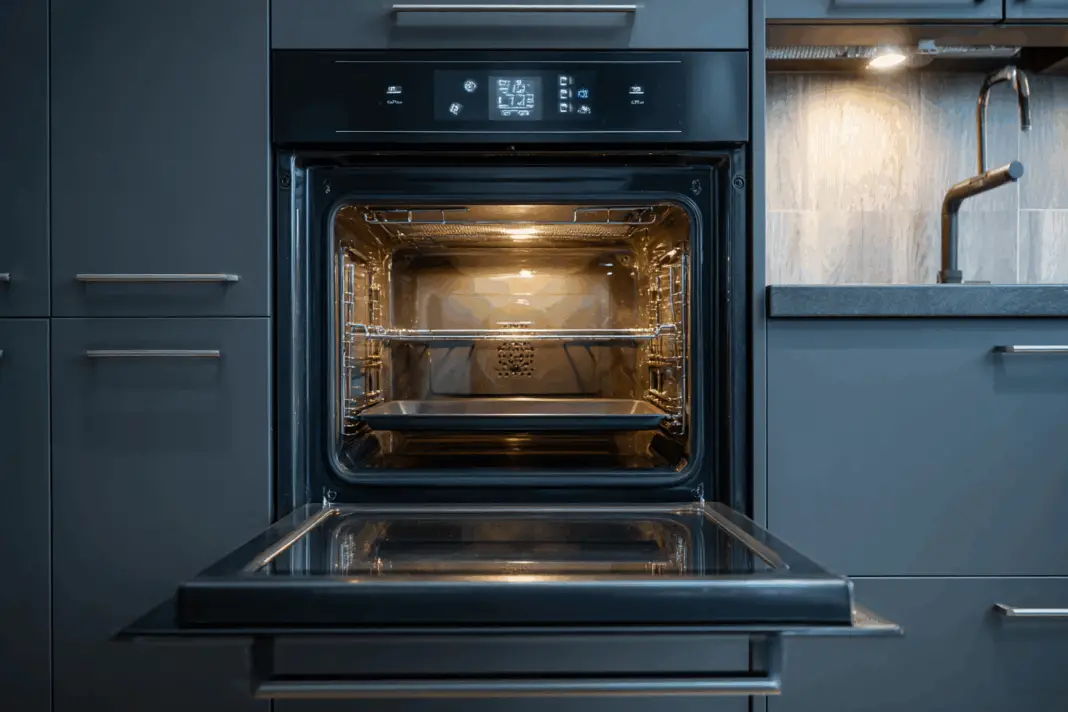Ever wonder why your electric bill seems to skyrocket even when you’re being careful about turning off lights and unplugging devices? The answer might be hiding in plain sight in your kitchen. That innocent-looking electric oven sitting quietly against your wall could be the biggest energy vampire in your entire home, secretly consuming as much electricity as 65 refrigerators running at the same time. Most people have no idea just how much power these everyday appliances actually use.
Electric ovens demolish your monthly budget
Think your refrigerator is the biggest energy user because it runs 24/7? Think again. While a typical fridge uses between 300 and 800 watts to maintain that steady cool temperature, your electric oven demands a whopping 2,000 to 5,000 watts every time you fire it up. That massive difference comes down to basic physics – keeping things cold requires much less energy than generating the intense heat needed for baking and roasting.
The numbers get even more shocking when you look at monthly consumption. A regular electric oven can easily rack up 40 to 90 kilowatt-hours per month depending on how often you cook. Meanwhile, that energy-efficient refrigerator humming away constantly might only use around 200 kilowatt-hours for an entire year. When you break it down, your oven could be using more electricity in three months than your fridge uses all year long.
Your oven steals power even when turned off
Here’s something that’ll really get under your skin – your oven is probably draining electricity right now even though you haven’t cooked anything in hours. Those digital clocks, display panels, and standby lights need constant power to keep running. It might not seem like much, but this invisible energy theft can account for anywhere from 5 to 26 percent of your oven’s total annual electricity consumption.
Research shows that standby power across various household devices can reach about 67 watts per household just for those little glowing displays and clocks. That innocent-looking clock on your oven face might be costing you more than you realize over the course of a year. Many homeowners never think about this phantom power draw because the oven appears to be “off,” but those electronic components are still working around the clock.
French study reveals shocking annual consumption
A comprehensive study conducted in France looked at actual household energy consumption and found some eye-opening results about electric ovens. The research tracked real families over extended periods and discovered that electric ovens can consume up to 224 kilowatt-hours annually. This number varies significantly based on the oven’s size, efficiency rating, and how frequently the household uses it for cooking meals.
What makes these findings particularly striking is the comparison to other appliances people assume are energy hogs. The same French study showed that energy-efficient refrigerators often use less than 200 kilowatt-hours per year. This means families who cook regularly could be spending more on their oven’s electricity than on keeping their food cold and fresh. The gap becomes even wider for households that do a lot of baking or roasting, which require longer cooking times at high temperatures.
Opening the door kills your energy savings
Every time you peek inside your oven to check on dinner, you’re basically throwing money out the window. Opening that oven door releases all the hot air your appliance worked so hard to create, forcing it to kick into overdrive to get back to the right temperature. This simple mistake can add significant time to your cooking process and substantially increase the electricity used for each meal.
The temperature drop from opening the door can be dramatic, sometimes losing 25 degrees or more in just a few seconds. Your oven then has to work at maximum power to recover that lost heat, which means burning through extra electricity you didn’t need to use. Instead of constantly checking your food, try using the oven light and looking through the window. Trust your timer more and resist the urge to peek unless absolutely necessary for food safety reasons.
Residual heat can finish cooking for free
Most home cooks don’t realize their oven retains tremendous heat even after being turned off. This residual heat represents free cooking energy that continues working for several minutes without drawing any additional electricity. By turning off your oven 5-10 minutes before your food is completely done, you can harness this leftover heat to finish the cooking process without spending another penny.
This technique works especially well for dishes that don’t require precise timing, like roasted vegetables, casseroles, or bread. The retained heat is usually sufficient to complete the cooking while your food stays warm and ready to serve. Some experienced bakers routinely use this method and report noticeable decreases in their monthly electricity bills without any compromise in food quality or cooking results.
Batch cooking saves massive amounts of electricity
Why heat up your oven multiple times throughout the week when you could accomplish the same cooking with just one or two sessions? Batch cooking allows you to maximize the energy you’re already spending on preheating and maintaining oven temperature. Instead of turning on your 3,000-watt oven four separate times, you can prepare multiple meals during a single cooking session and dramatically reduce your total electricity consumption.
Smart batch cookers plan meals that can share oven space or cook sequentially at similar temperatures. You might roast vegetables on one rack while baking chicken on another, then follow up with a casserole that uses the same temperature setting. This approach can cut your oven-related electricity costs by 50-75% while also saving time on meal preparation throughout the week. The energy savings add up quickly when you’re not repeatedly heating that massive oven cavity from room temperature.
Unplugging saves more than you think
While it might seem extreme, unplugging your electric oven when not in use can lead to meaningful savings over time. Those digital displays, clocks, and control panels draw power constantly, even when you’re not cooking anything. For many households, this phantom power consumption represents dozens of dollars annually that could be avoided with a simple plug removal.
Obviously, this isn’t practical for everyone, especially if your oven is built-in or hardwired. However, for those with standard plug-in units, the savings can be worthwhile. Some people find it easier to flip the dedicated circuit breaker for their oven, though this requires a trip to your electrical panel each time. The key is finding a solution that works for your specific setup and lifestyle while eliminating that constant power drain from standby features.
Dryers actually consume even more energy annually
While electric ovens are certainly energy hungry, clothes dryers might actually be the biggest electricity vampires in most homes. Recent research from the University of North Texas found that dryers can account for up to 6% of total household energy consumption. These appliances typically require more than 1,000 kilowatt-hours annually, making them even more expensive to operate than most electric ovens.
The average American family using their dryer four to five times per week spends about $150 annually just on electricity for this single appliance. Unlike ovens that get used for 30-60 minutes at a time, dryer cycles often run for over an hour and create what energy experts call “load cliffs” – sudden spikes in electricity demand that stress the power grid. This makes dryers another prime target for energy-conscious homeowners looking to reduce their monthly bills.
Understanding which appliances truly drive up your electricity costs helps you make smarter decisions about energy usage. Your electric oven might consume as much power as dozens of refrigerators when it’s running, but simple changes in cooking habits can significantly reduce its impact on your monthly bills without sacrificing the meals you love.

